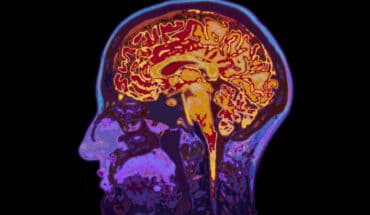A new mass study of people living with chronic pain in the UK has demonstrated the links between pain and certain atmospheric weather conditions.
Weather systems in the UK could cause chronic pain suffers to experience more or less pain on certain days as a result of certain pressure patterns and accompanying rain, humidity, and temperature caused by movements in the jet stream, according to new research published in the Bulletin of the American Meteorological Society.
To better characterise which weather conditions most affect pain, a group of University of Manchester–based researchers and their collaborators, funded by Versus Arthritis, conducted a 15-month long study with over 13,000 UK residents living with chronic-pain conditions.
In this study called Cloudy With a Chance of Pain, the participants recorded their daily pain intensity within an app on their smartphones. The GPS location of the phone would then link to the weather data. The team’s previous work used a statistical approach to examining the difference in local weather between days where individuals had an increase in pain over the previous day versus days they did not have such a pain event.
In this new study, the team analysed the data across all of the UK as a meteorologist would do. The researchers ranked all days in the study by the percentage of people responding who recorded a pain event. The most painful days had 23% of participants reporting an increase in pain, and the least painful days had 10% of participants reporting an increase in pain.
The researchers took the 45 days at the top of the ranking (the top 10% of all study days) and averaged the weather conditions on those days to determine the weather patterns present when the most number of people were in pain. They did the same for the 45 days where the least number of people reported pain (bottom 10%).
These research results show for the first time the weather patterns on days with a large number of people reporting pain, compared to days with a low number of people reporting pain. On the most painful days, the jet stream was aimed right at the UK, with below-normal (or low) pressure over the UK. The humidity and precipitation rate were both above normal, and winds were stronger. In contrast, on the least painful days, the jet stream tended to blow north of the UK, bringing above-normal (or high) pressure to the UK. The humidity and precipitation rate were both below normal, and winds were weaker.
The new research was led by Professor David Schultz, Department of Earth and Environmental Sciences, The University of Manchester, and is a collaboration with the Cloudy With a Chance of Pain team led by Professor Will Dixon, from The University of Manchester. Prof Schultz has now been awarded the 2020 European Meteorological Society S. W. Tromp Foundation award for “Outstanding Achievement in Biometeorology” for this research paper.
“Over 2400 years ago, Hippocrates wrote that different wind directions could bring better or worse health to individuals. said Prof Dixon. “The belief by people living with long-term pain conditions, such as arthritis, that their pain is affected by the weather remains prevalent today, with about 75% of people with chronic pain believing this to be true. Yet, there is disagreement over what weather condition makes their pain worse.”
Prof. Schultz added, “Part of the reason for this lack of consensus is that previous researchers have treated the different measures of the weather such as pressure, temperature, humidity separately, which assumes that one could vary the temperature while holding all of the other weather measures fixed. Of course, the real atmosphere does not behave like this, as all the variables are changing simultaneously. A simple analysis clearly won’t do to get at understanding how weather affects pain.”
This research confirms and expands on previous research from the Manchester researchers. Because this study is the largest in terms of both duration and number of participants, it allows greater confidence in the results. Although not everyone believes in the link between weather and pain, the results of this project should give comfort and support to those who have claimed that the weather affects their pain, but have been dismissed. Finally, this research also begins to shed light on the environmental conditions that modulate pain, insight that might be explored further for improving the treatment, management, and forecasting of pain.
- New lipid-based pathway discovered as key to memory formation - 25th June 2025
- Crucial link could explain how Alzheimer’s takes hold - 25th June 2025
- Understanding Your Mind Can Improve Daily Life - 25th June 2025







